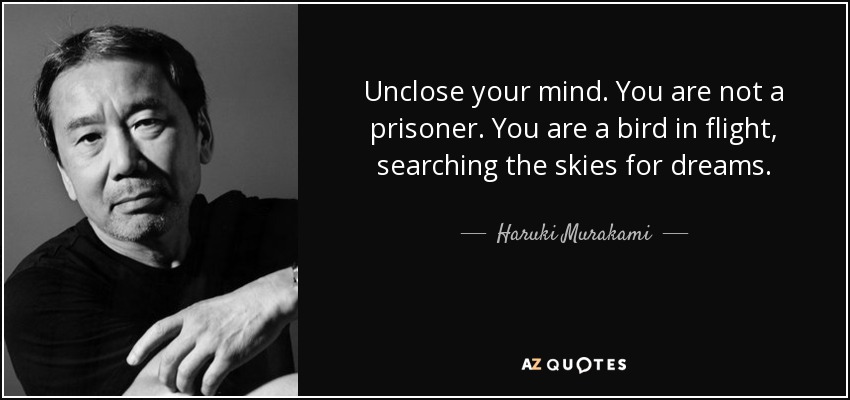An editor’s services are really worth it, but every writer can get more out of the editing process if they can bring their work to the best state of finish possible before editing. New writers might feel both triumphant and exhausted upon completion of their first draft and it can seem like the right choice to pass the work on to an editor. But an editor can only do so much. They can clarify meaning and the mechanics of language but usually avoid interfering with the author’s intended meaning or word choice. One of the best things any author can do is to completely rewrite their book. Seasoned writers are used to the marathon of redrafting, but first-time authors might balk at the prospect. As Neil Gaiman says,
Write down everything that happens in the story, and then in your second draft make it look like you knew what you were doing all along.
A second draft is the best tool any author has for improving their work, and it saves money too, since your editor doesn’t need to correct simple mistakes or basic language errors and can instead focus on making your book the best it can be. During the drafting process, it’s a good idea to have some simple self-editing tools to work with.
If you write in the past tense (most novels are past tense) use find and replace to look for gerunds.
If you write in the past tense and use a verb that ends in ING, it means that you wrote a sentence with two verbs. Something like this:
She fidgeted at the desk while reading her new novel.
The two verbs are competing for dominance and one will always win. The verb “fidgeted” is in past tense and corresponds to the time-consciousness of the novel, while “reading” is in present tense and so ever-so-slightly breaks the reality of the time we want to work with. The reader has to work to resolve this and with effort figures out that these actions happen at the same time and that “reading” is more important. If “reading” is the action we want to convey, why not just make that the verb? If “fidgeted” is an important action, then it should just have its own sentence.
The reason we write like this is just because of hesitation or lack of confidence. We picture the character fidgeting but can’t make the verb work in a single sentence, so we build it into another idea to support it. That isn’t necessary, and its too much to ask of a single sentence. Writing doesn’t have to represent every single thought we have about a character. It’s more important to make sure the action is clear and not muddled by verbs competing with each other. If a verb doesn’t seem to stand on its own in a sentence, it doesn’t indicate a lack of writerly skill, it just means that it probably isn’t important to the story. The sentence “She fidgeted.” is perfectly clear and has precise action, but it just isn’t that interesting or meaningful. If you closely examine a sentence every time you use a gerund, you’ll find more precise words and eliminate confusion. If every sentence has only one verb, the writing will be clear and meaningful and never break the time consciousness of the book. Of course there are countless examples of long complicated sentences written by elevated authors but keeping to this rule can be a great foundation for any beginning writer. New writers often over-complicate their work because of their anxiety about writing. Simple sentences with one actor and one action can be very effective. They also set up a kind of rhythm which lends energy to the story overall.
It can be draining to puzzle through every sentence to find out which verb is more important. It is a paradoxical problem because multi-verb sentences help new writers feel more confident, as though the ideas are really being expressed thoroughly when in reality ideas are being obscured.
While/ started to / began to
These are other common phrases used to shove two verbs into one sentence. The result is usually the same. One of the verbs doesn’t matter and couldn’t stand on its own while the other verb loses any sense of agency or action. Search for these phrases during your second draft and see if there are opportunities to give the true verb its due.
She began to cry while packing her suitcase.
This can seem dramatic and full of emotion, but all of the verbs are robbed of their power and don’t even go together. The character, the person we care about, only gets “began” as an action. The true action is that she is packing her suitcase, but because “packing” is a gerund it seems out of the time consciousness of the story and secondary. Even though it is a short sentence, the action loaded at the end causes the reader to hesitate. We have to read it a second time to figure out what we missed. Even the object of the action “her suitcase” is redundant, since what else would you use whilst packing?
She cried. She packed.
Even though these two-word sentences are pretty brutal, they have a lot more emotional force than the previous version. The character gets to keep her action instead of letting it diffuse into “began to.” The words have compelling rhythm and give up their meaning instantly. The reader feels propelled forward by the music of the words and their easy comprehension. A first-time writer might feel insecure about writing two-word sentences, but the movement of the story overall is much more important than any individual sentence.
As I search and destroy “started to” in my own work, I began noticing it in other novels, especially books that have a cinematic or episodic approach to story telling. I found Stephen King often ends chapters with a “started to” sentence. Then I realized that the overall effect of the sentence is to create a fade out, like you would see at the end of an television drama. The action fades but the story suggests continuation in the future, thus the characters “start to” perform an action that we don’t see completed. It gives the reader / viewer a sense of the story progressing beyond the end. I liked how “started to” can suggest a future for the characters at the end of a chapter or book, it feels a bit like riding into the sunset at the end of a cowboy movie. But I don’t like the impact in the midst of a story. It skips over the action so that we don’t get to see it. The characters “start to” do something but we don’t actually see the action unfold. It’s just another way of negating the verb and therefore taking the action away from the characters. I do like how it is used if it is the very last sentence of a chapter, it gives a sense of continuation after the story ends.
Rules in writing and grammar are never absolute, there is no right or wrong. It’s a creative process after all, not a court of law, and every author creates their own world. It can be whatever you want it to be. But careful review during a second draft can always improve your story. If you search and destroy “started to” you will probably like the result, greater clarity and comprehension in your book and dynamic characters who own their action. If you rewrite carefully during your second draft you might find places where you like the phrase “started to” and you are resistant to eliminating it. There’s probably a good reason for that. Usually good grammar also “sounds good” and has a kind of music. Creating rules for yourself just helps build a creative strategy for a second draft, it isn’t meant to inhibit creativity. And if you feel constrained by arbitrary rules, just throw them out. Make the story sound good to your inner ear. Many first-time writers use an overly complex writing voice that is much different than how they speak. During a second draft, speak your sentences out loud or under your breath. You will find yourself tripping over certain parts or finding them difficult to express verbally. That’s a great marker for revision. Often, editing for sound will correct grammar problems even if you don’t know what they are. “It sounds bad” can be a wonderful shortcut for second drafters.
a smile stretched his lips / his eyes squinted / his leg bounded over / tears flowed from his eyes
Another super-easy self-edit is to look for places where a character’s body part takes action instead of the character. Our physicality is so tied to emotion that body parts often become symbols for emotion, such as the heart. Emotions can be so powerful that we feel transported and just focus on the sensations of our bodies, but writing this way is another way of stealing action from the characters. Assigning action to individual body parts fragments and de-personalizes our characters instead of intensifying emotion as we intend.
His lips kissed hers, his eyes raked across her skin.
Even though this sounds intense, it also includes the image of the disembodied body parts acting independently. The final meaning is goofy and confusing and takes away from the sense of personhood and wholeness we are trying to create in our characters. Instead of emphasizing the intensity of feeling in those individual body parts it just sounds silly. Keeping the action with the character is always better.
He kissed her. He looked at her as though his glance could capture her there forever.
Assigning the action to the character is always better. If the actor and the action are close together at the beginning of the sentence (he kissed / he looked) the meaning is always clear from the beginning and then the rest of the sentence can be used for writerly flights of fancy or complex metaphors. If the verb is buried or cancelled out by another verb then the sentence is hard to understand no matter how artfully it is crafted.
Pain shot through his body.
Here the actor is “pain” and the verb is “shot.” The character doesn’t have any agency at all, he just owns “his body.” The character isn’t even present in this sentence. But to be fair, that is what pain can feel like, out of control, a complete loss of agency. In fact it is hard to think of a good way to give the character the action. He suffered? Removing the action from the character’s control can be appropriate, but it is almost always stronger to have the character control the action.
The point is, there are no rules in writing—even the rules of grammar aren’t really rules—but everything conveys meaning, clarifies or obstructs it. Every sentence can build the music and meaning of a work overall, or it can obstruct and befuddle the experience. The point for every writer is simply to give your work the consideration it deserves, and work to preserve the characters as dynamic actors and complete persons.
seemed to
“seemed to” is yet another strategy for disempowering verbs. I think this practice overall is just shows a lack of confidence. “Seemed to” provides cushioning and space between the actor and the action and lets the author disavow the text and distance themselves from their own writing. It is sort of reminiscent of office politics. People working together don’t want to violate their sense of community by taking power over each other, so to plan a meeting you might say, “The meeting will occur at 3:00 in the conference room.” The meeting seems to be something naturally occurring, part of the atmosphere and environment, instead of the result of your action. This is a great way to maintain good relations with your office-mates but ruins writing. Why have a character seem to do something instead of actually doing it? You might feel unsure of your character’s motivations, but that is a great opportunity for re-drafting. So what are they really doing? What motivates them? “Seemed to” only indicates that the author hasn’t thought about the story enough, it doesn’t change the action or add any nuance, it just interferes with it.
tried to
Are you sure your character “tried to” do something? Most likely there is a different word that can meansthe same thing and provides more texture than simply negating an action.
She tried to speak, but emotion overcame her.
There are other word choices that can convey the same thing with more vivid detail. Using “tried to” just means eliminating the verb, you are describing something that didn’t happen.
She choked on her words, overcome with emotion. She stammered, no words would come. She faltered and emotion washed over her.
There are a myriad of word choices that work with this idea, and every choice is more compelling than the hollow space left after negating a verb with “tried to.”
Every author writes within a pattern, and every author gradually develops their pattern over time. You can’t always see this pattern in the first draft, but it will always be obvious on the second. You’ll find that you have a pattern of repeating certain words and phrases, for instance. Your pattern is what distinguishes your work, and the point is to understand it, to care for it, to hone it so that it becomes a better instrument for telling the story. It can be helpful to search for “rules for writers” and just think about what resonates with you. It can be helpful to look for words you use often and see if you notice the repetition. You will get more out of the editing process if you have a solid approach to your second draft. These are some of the simple things I always change when editing and redrafting. What are some of the simple things that you look for?








Leave a Reply